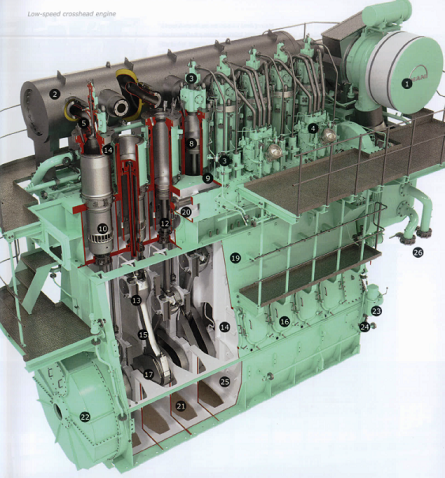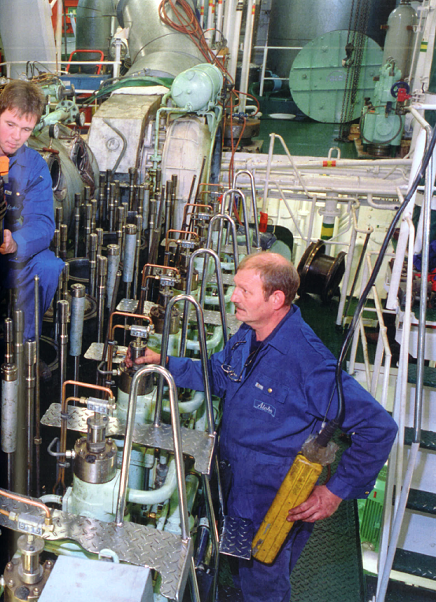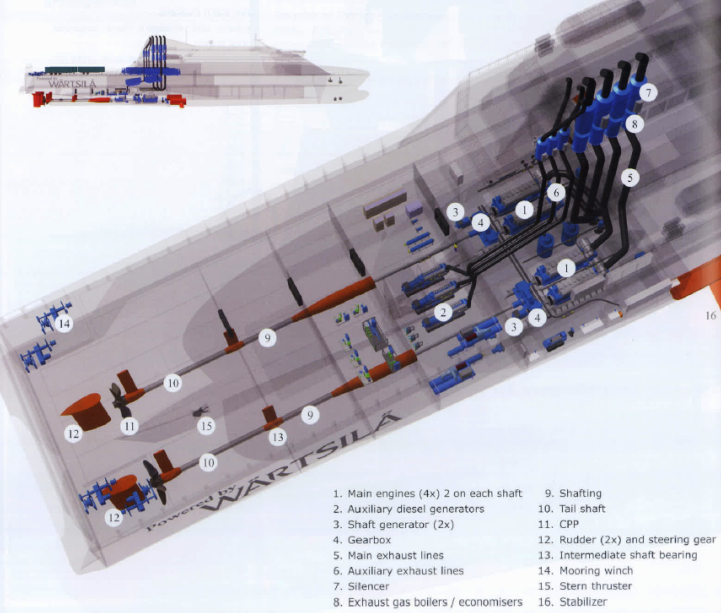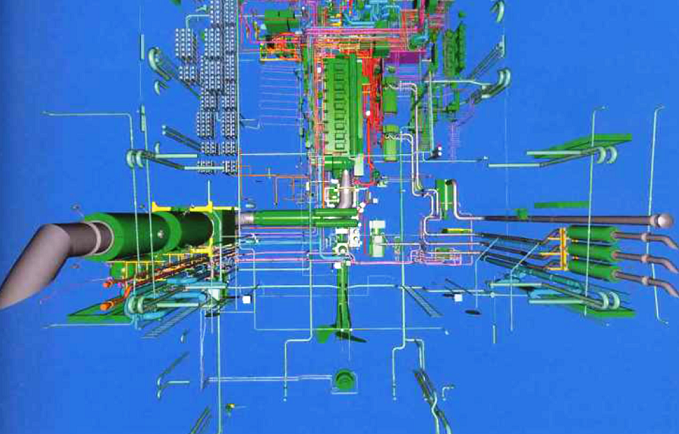Engine room
Engine room
This is the first of a series of review articles devoted to the heart of the ship - its engine, power plant. Let's touch on the device of various systems that ensure the functioning of the vessel and the life of the crew.

Engine room
Let's start by describing the place where this heart beats - the engine room. On most cargo ships, it is located aft and is shortened as much as possible to provide more cargo space. On narrow vessels (such as container ships), it is, accordingly, more elongated in order to fit everything.

On modern passenger ships and Ro-Ro ships (special ships for "cargo on wheels" - trucks, wagons), the engine room, on the contrary, is limited in height to leave vertical space for cabins or vehicles. But it occupies a large area under almost the entire vessel.

Ship designers are trying to reduce the size of the engine room as much as possible, but the limit has already been reached: so much has to be placed here! The engine room of the ship is very complex and filled to the limit with various equipment. The approach of the designers is to bring together all the mechanisms and systems that require the attention of mechanics as compactly as possible.
The main systems located in the engine room:
-
Main engines (4x) 2 on each shaft
-
Auxiliary diesel generators
-
Shaft generator (2x)
-
Gearbox
-
Main exhaust lines.
-
Auxiliary exhaust lines
-
Silencer
-
Exhaust gas boilers / economisers
-
Shafting
-
Tail shaft
-
CPP
-
Rudder (2x) and steering gear
-
Intermediate shaft bearing
-
Mooring winch
-
Stern thruster
-
Stabilizer
Here or nearby there are reservoirs that ensure the ship's autonomy:
-
Fuel tanks
-
Oil tanks
-
Tanks for drinking water, untreated water, effluent
-
Tanks for various chemicals
-
High pressure air cylinders
Plus kilometers of pipelines of various diameters connecting all these systems and reservoirs, with their own valves, valves, filters.
Modern design methods for the engine room
All of the above must be compactly placed in the space left from the main engine. Not an easy task for a designer! Previously, it was necessary to build huge life-size models, and use them to fit all this mechanics' economy to each other. How well and conveniently it turned out to be done for this vessel, the final verdict was made by them, the end users, as they say now.
Now, with the help of computers, three-dimensional models of the entire ship are being built, including the engine room. Each system is designed as part of the model. The system can be viewed separately, its pipelines can be highlighted in a separate color. You can even take a virtual walk inside the virtual machine room, checking valve positions, etc.

Bright future
Sometimes (more often on special-purpose ships), when the race for space and economy fades into the background, new generation engine rooms are created - quite spacious and cool, with convenient access to all units, and a high degree of automation. This greatly facilitates the work of mechanics and minders unnoticed from the upper deck. Thanks to their skillful, oiled hands, our ships sail the seas instead of standing against a wall.
 +7 (812) 4-673-673
+7 (812) 4-673-673